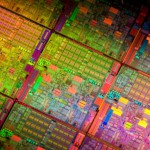“It is often said that semiconductors are lacking, but the biggest shortage is engineers,” Hideki Wakabayashi, professor at the Tokyo University of Science, who is the head of the policy proposal task force at the JEITA semiconductor board, told the Nikkei.
The big Jpanese companies are warning that the government’s push to revive its domestic chip industry is being threatened by a shortage of engineers.
TSMC and Sony are building a $8.6 billion plant in Kyushu, and aim to hire about 1,700 workers for the facility. The government said it will pay a $3.5 billion subsidy fir the fab.
More plants are coming online. Kioxia, together with its joint venture partner Western Digital, is spending nearly $7.4 billion on a factory in central Japan to open in autumn, and will allocate another $7.4 billion for a factory in northern Japan that is scheduled to be completed next year
Renesas will invest $666 million to reopen a factory it closed in 2014 to expand production of power semiconductors used in EVs..
As the Japanese chip industry shrank, the number of workers aged 25 to 44 in electronic components, devices and circuits dropped from 380,000 in 2010 to 240,000 in 2021, according to the Statistics Bureau of Japan.
“Most Japanese studying science subjects are more interested in IT, not necessarily semiconductors,” Toshiba’s Takashi Miyamori told the Nikkei, “there’s a fight over the best engineers globally and we need to come up with ways to be competitive.”

